Edible weeds: 15 unexpectedly tasty plants to enjoy as crops
These 15 edible weeds will enhance your kitchen garden and deliver quick and easy nutrition, variety and color

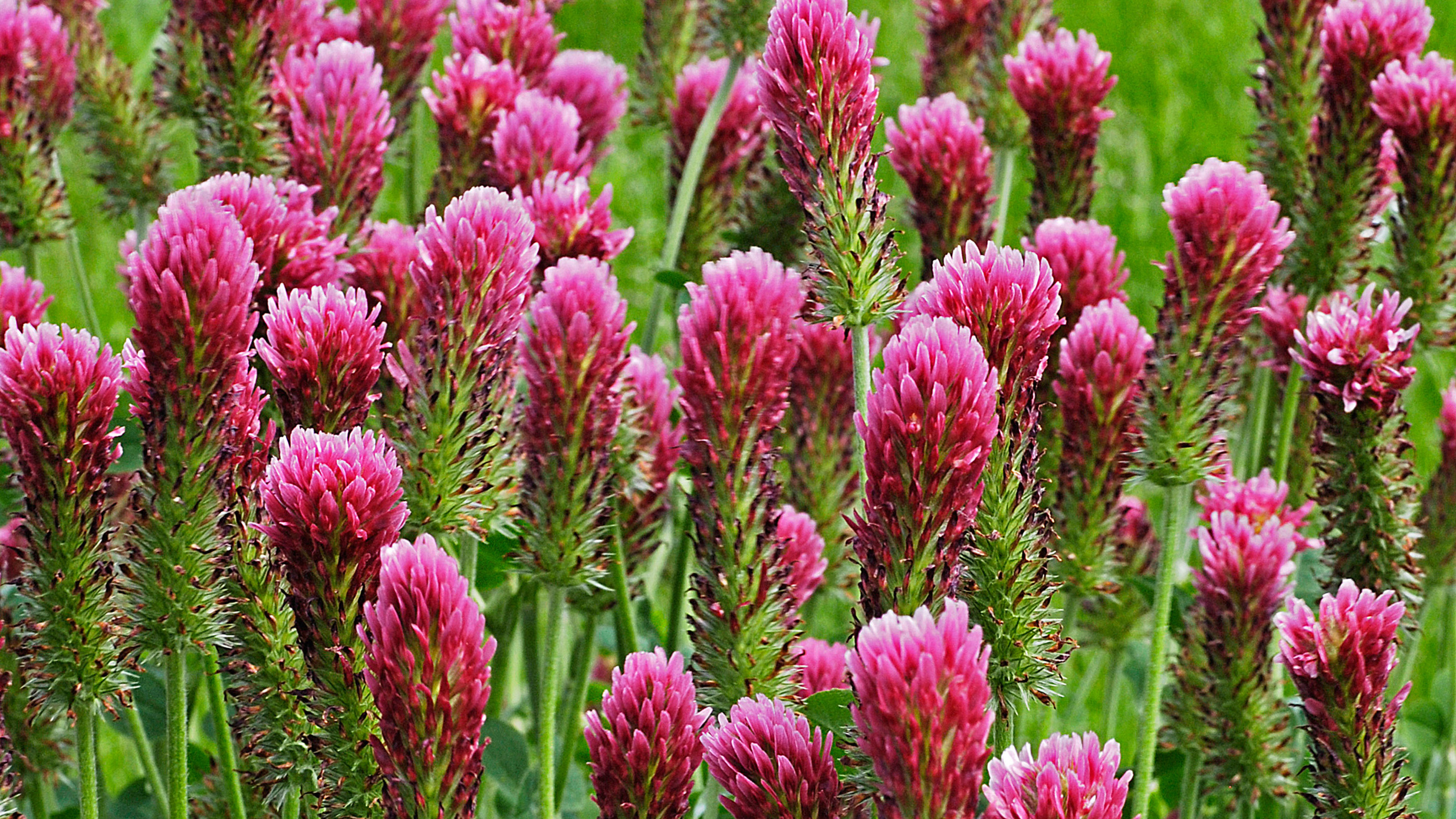
Edible weeds may sound too good to be true, but you know what they say: one man’s trash is another man’s treasure. And hey, what better way to tackle any pernicious, wild or uninvited garden growths than to eat them? Revenge can be sweet, after all. And if this round-up shows us anything, it’s that there is a genuine purpose to many plants we might previously have written off as bad news.
The word ‘weed’ suggests garden terrors that choke the life from beloved ornamentals, stealing nourishment from the ground and taking over a garden in days. But the reality is that many weeds serve a purpose and can work wonders in the kitchen garden alongside more obvious cropping staples. Several are beneficial and have medicinal properties, while others are undeniably nutritious – and a few are delightfully pretty on a plate!
American poet Ella Wheeler Wilcox once wrote: ‘A weed is but an unloved flower.’ So in this selection, we encourage you to feel the love for a host of plants that have suffered too long from a bad press. It’s definitely time to reassess the worth of some very wonderful weeds, as we present a feast of easy-growing (and genuinely tasty) edible treasures.
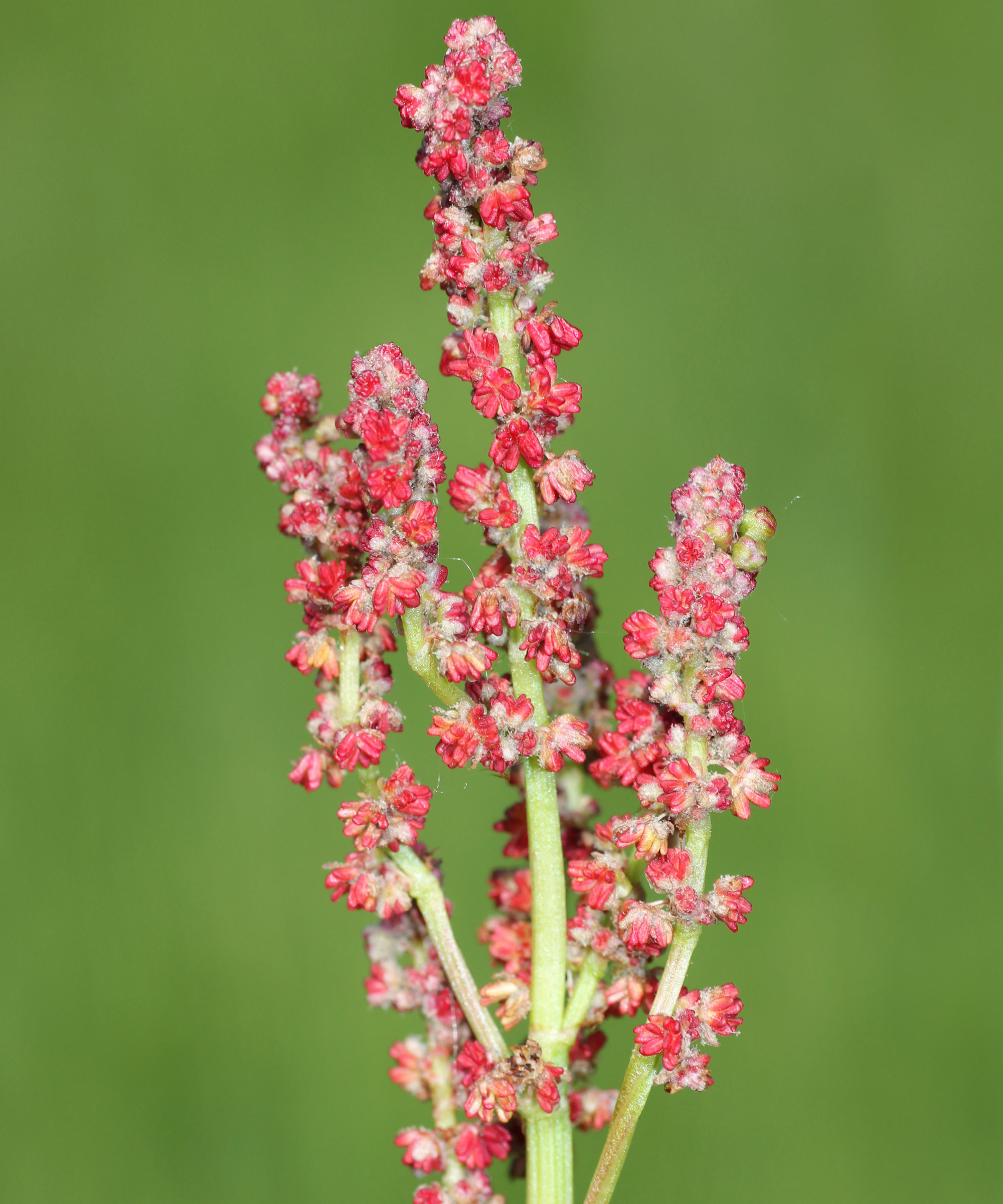
15 types of edible weeds to transform a kitchen garden
The definition of ‘weeds’ is a thorny one, and can outfox even seasoned gardeners. What some dismiss as undesirable and unwelcome, others celebrate and seek out. Indeed, ‘weeds’ can often be interchangeable with ‘wildflowers’, depending on your point of view.
If you are rewilding your garden you will be familiar with a few of the entries in our list of edible weeds. Likewise, foragers and potager garden lovers will recognize – and welcome – these plants for their medicinal and beneficial qualities.
Lots of these plants are self-seeding and can be found growing naturally in quiet corners of your garden. But it is possible to purchase seeds online for many ‘weeds’ if you are interested in expanding your culinary horizons!
1. Nettles
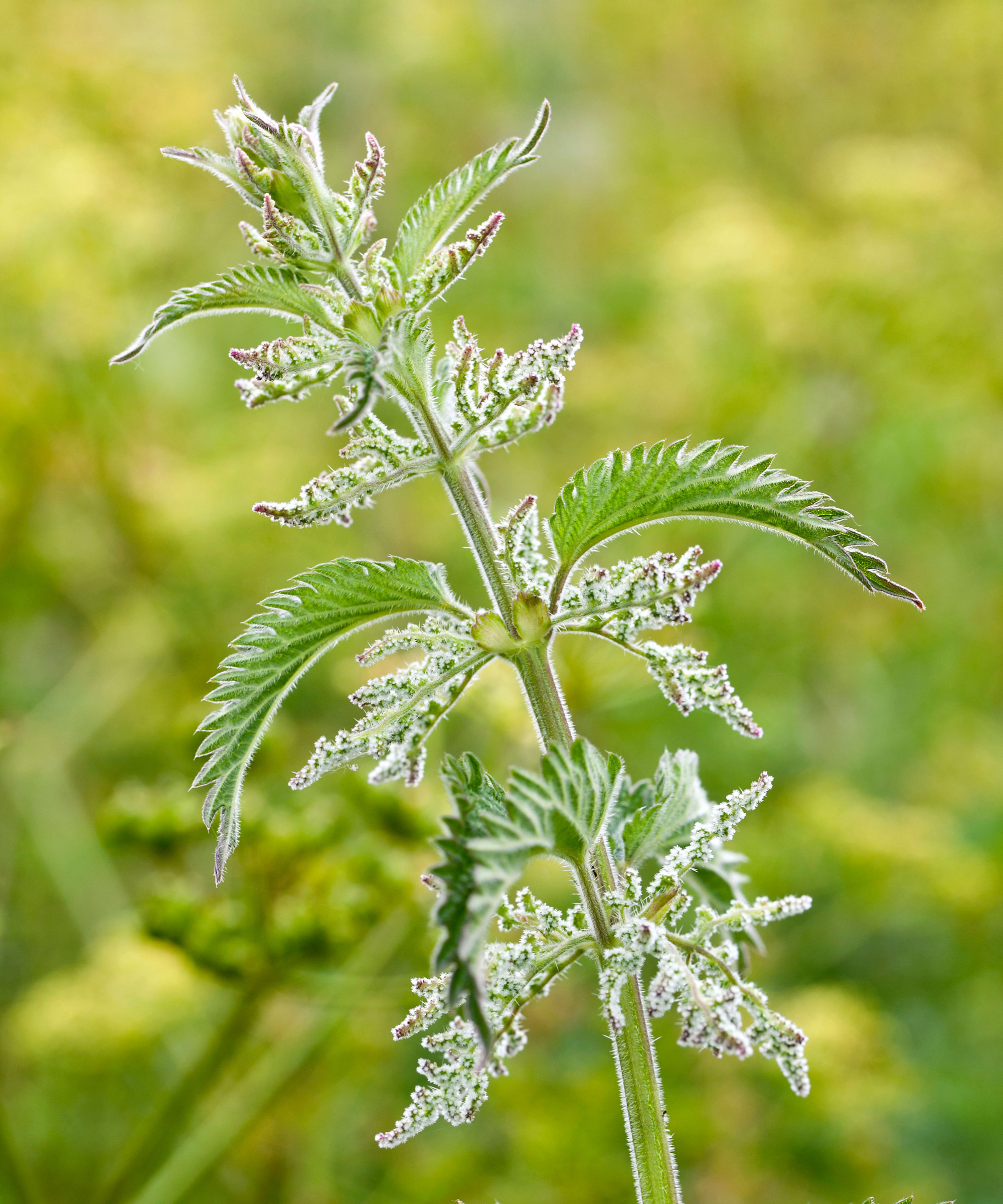
- Height: up to 1.2m
- Edible parts: leaves, stems, roots
Who hasn’t come a-cropper with stinging nettles? But you’d be amazed how tasty these prolific garden squatters can be. The tasty leaves of both annual Urtica urens and perennial U. dioica are a revelation. Easily picked from walls and fences, all you need are sturdy gloves to harvest highly refreshing edibles. Just don’t eat raw, and avoid eating once nettles flower.
Nettles are some of the best plants for pollinators, especially butterflies. Also, having nettles as companion plants with other crops can encourage beneficial insects like ladybirds, which act as a natural pest control. These weeds make excellent soups, teas and wilted greens. Loaded with iron, potassium and calcium, nettles have been unfairly maligned for long enough. Time to tuck in!
2. Mallow
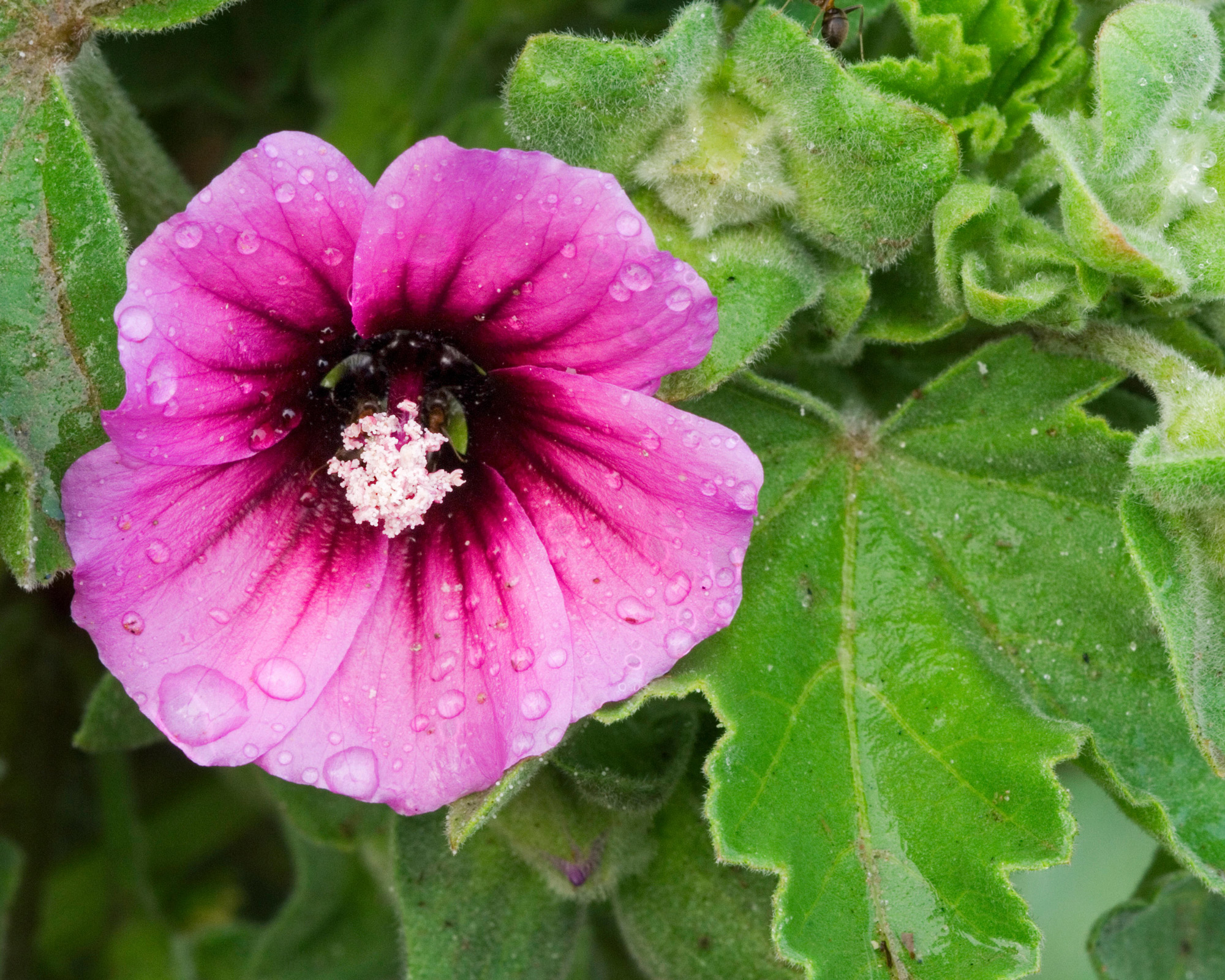
- Height: can reach 1-1.5m
- Edible parts: leaves, flowers, seeds
Pretty wild mallow (Malva neglecta) and common mallow (Malva sylvestris) appear in mixed shades of funnel-shaped pink flowers, often two-toned or striped. The foliage tends to be lobed and crinkled. Some say the leaves taste nutty, others that they taste like spinach. In Roman times, common mallow was considered to be an aphrodisiac!
Mallow has edible flowers as well as leaves, plus the roots can be used to help make a nourishing brew. You can also pickle the buds. ‘Mallow of the woods’ is the wild cousin to the tree mallow (Lavatera maritima or Malva arborea), which also has edible flowers and leaves.
- Buy rose or tree mallow in the US: view at American Meadows
- Buy common mallow in the UK: view at Amazon
3. Chickweed
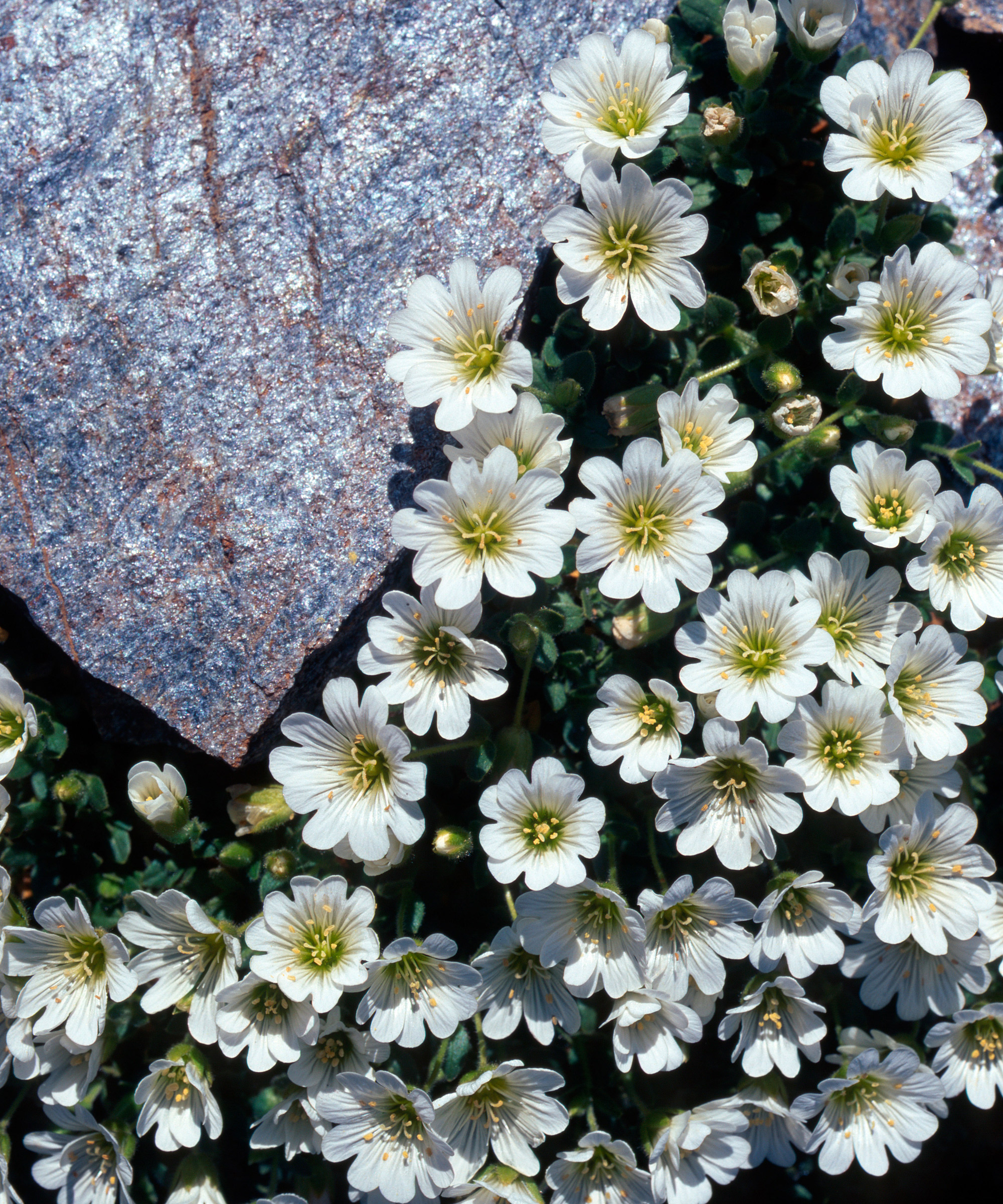
- Height: 40cm high
- Edible parts: flowers, leaves
Given its white star-shaped blooms, chickweed (Stellaria media) has a delicate, uplifting ornamental quality. It may technically be a weed, but it is also a pretty one. It grows in abundance in a flower bed, along a pathway and across lawns. Chickweed also makes some of the best container plants you can grow – and the fact they are edible is a bonus.
As Amateur Gardening’s veg expert Lucy Chamberlain points out, these types of weeds have a soft, buttery texture and can be cooked like spinach, although they are best as salad leaves. ‘The flavour is mild, so use this edible weed as a bulking agent for more peppery leaves such as watercress and chicory,’ says Lucy.
- Buy chickweed in the US: view at Mountain Rose Seeds
- Buy chickweed in the UK: view at Nicky’s Nursery
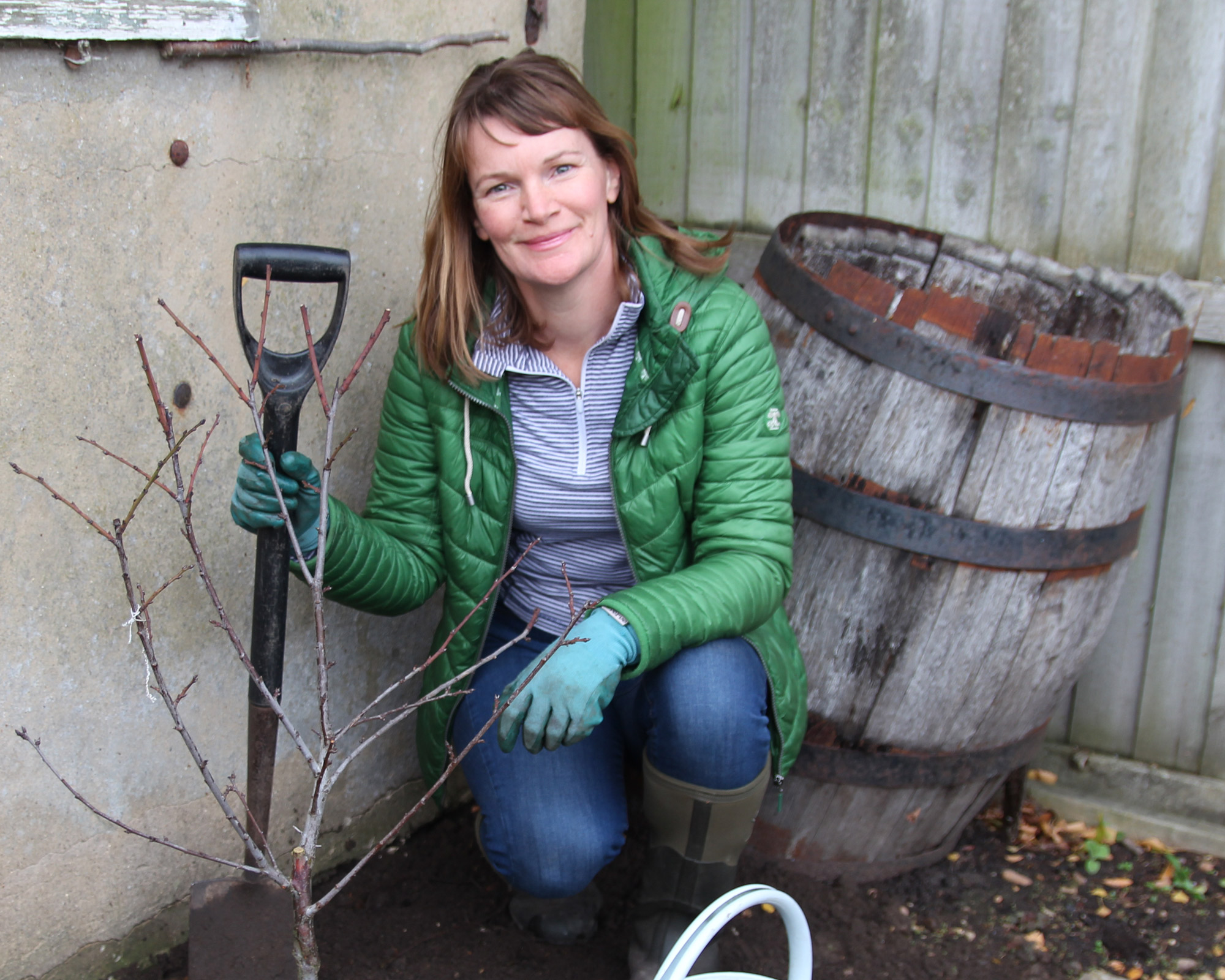
Lucy was a Horticultural Advisor at RHS Wisley for six years. She has been Head Gardener on a 100-acre private Essex estate for seven years, and writes regularly for titles such as The Garden, Gardeners’ World and The Guardian. She's the author of the RHS Step by Step Veg Patch book, and the fruit and vegetable expert for Amateur Gardening magazine, providing readers with invaluable grow-your-own-advice in every issue.
4. Nasturtiums
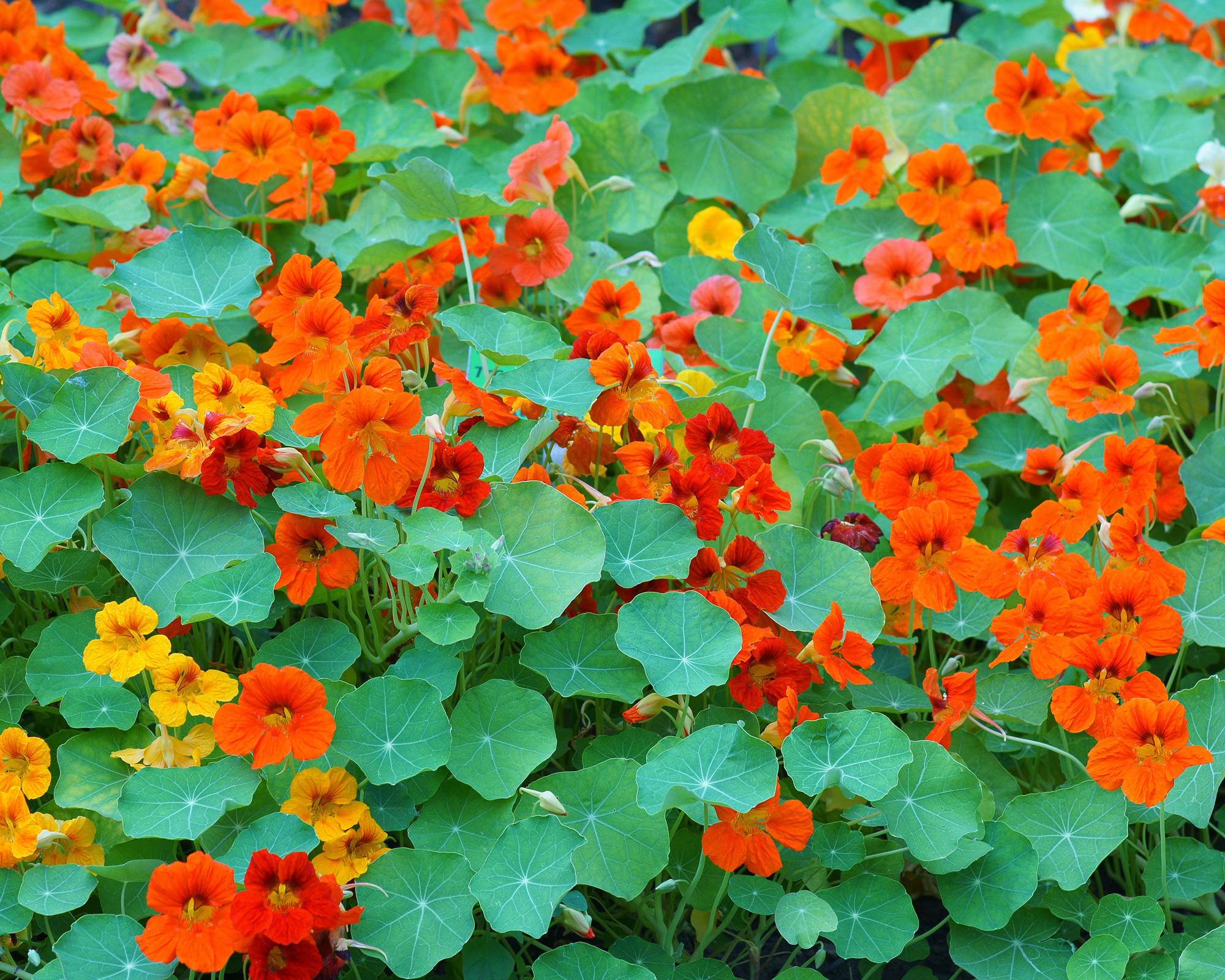
- Height: up to 3m high
- Edible parts: leaves, flowers, seeds
With their nickname ‘nose twister’, nasturtiums are known for their spicy kick. What’s more surprising is that these garden stalwarts are still often disparaged. Given their gorgeous floral hues and lily-pad leaves, they have rightly earned their place in beds and borders as well as modern kitchen gardens. They are loaded with vitamin C, calcium, zinc and iron – and the blooms look lovely in salads.
However, because of their vigorous, sprawling growth habit and year-round growing potential, they tend to fall into the ‘weed’ camp by default. Nonetheless, they make for tantalizing peppery additions to all manner of dishes. The seeds can be used to make capers, commonly known as ‘poor man’s capers’. And for those with a taste for adventure, why not crush the leaves to add rich tints to pesto and bread?
5. Hairy bittercress
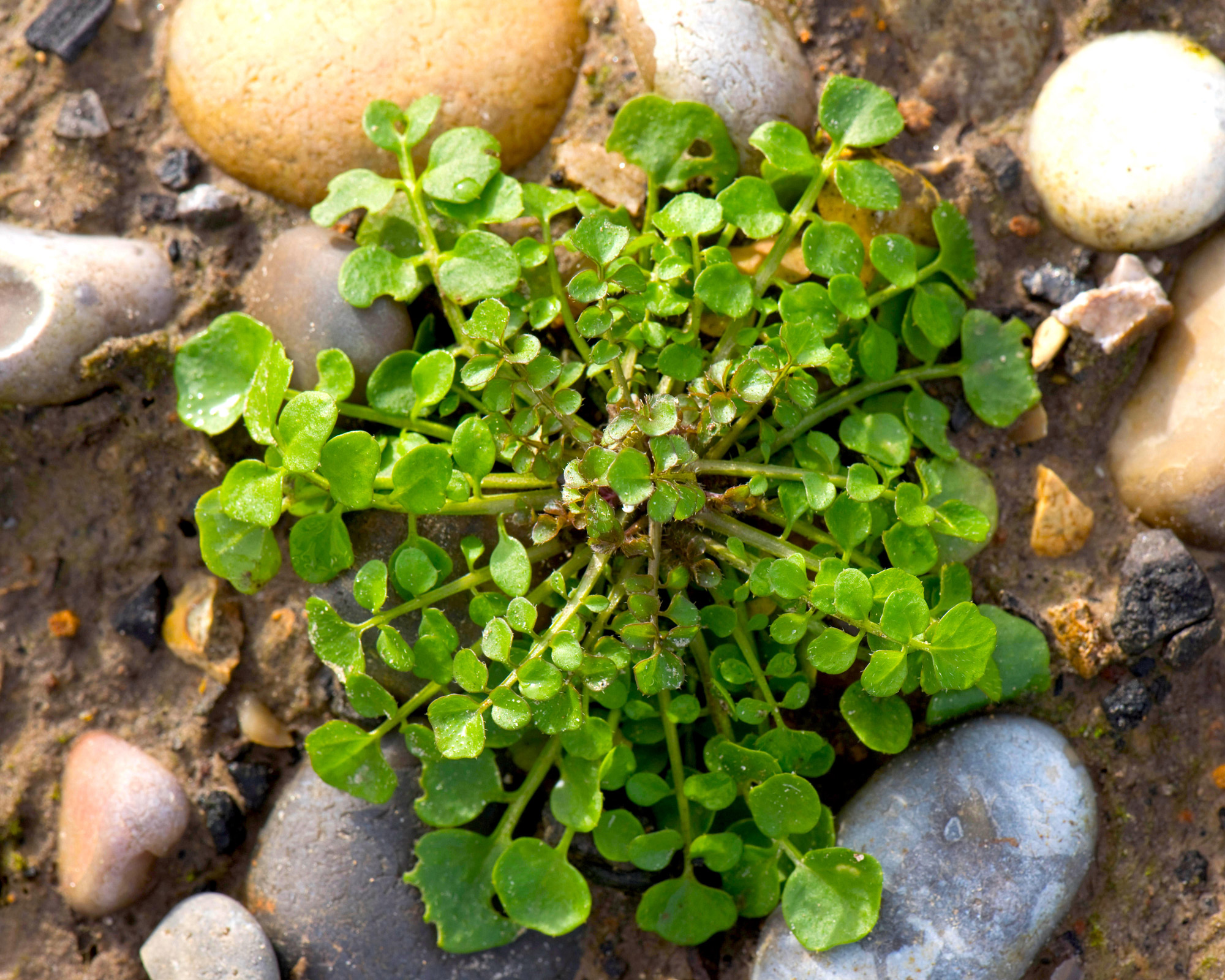
- Height: 30cm high
- Edible parts: leaves
It may not be the nicest-sounding weed on the block, but hairy bittercress (Cardamine hirsuta) has some redeeming qualities. That is, once you manage to extricate it from your paths, garden walls, pots and bare soil patches. It is definitely one of the most persistent annual weeds, as well as one of the most distinctive, with its rosettes of small green leaves.
Still, its fresh, cress-style flavor makes it amongst the tastiest weeds to eat, raw in salads or mashed up in a peppery pesto. ‘During winter, this hardy plant develops slowly,’ says Lucy. ‘Gather it before spring, and you’ll make a severe dent in its population. Revenge is definitely a dish served cold!’
6. Fat hen (lamb’s quarters)
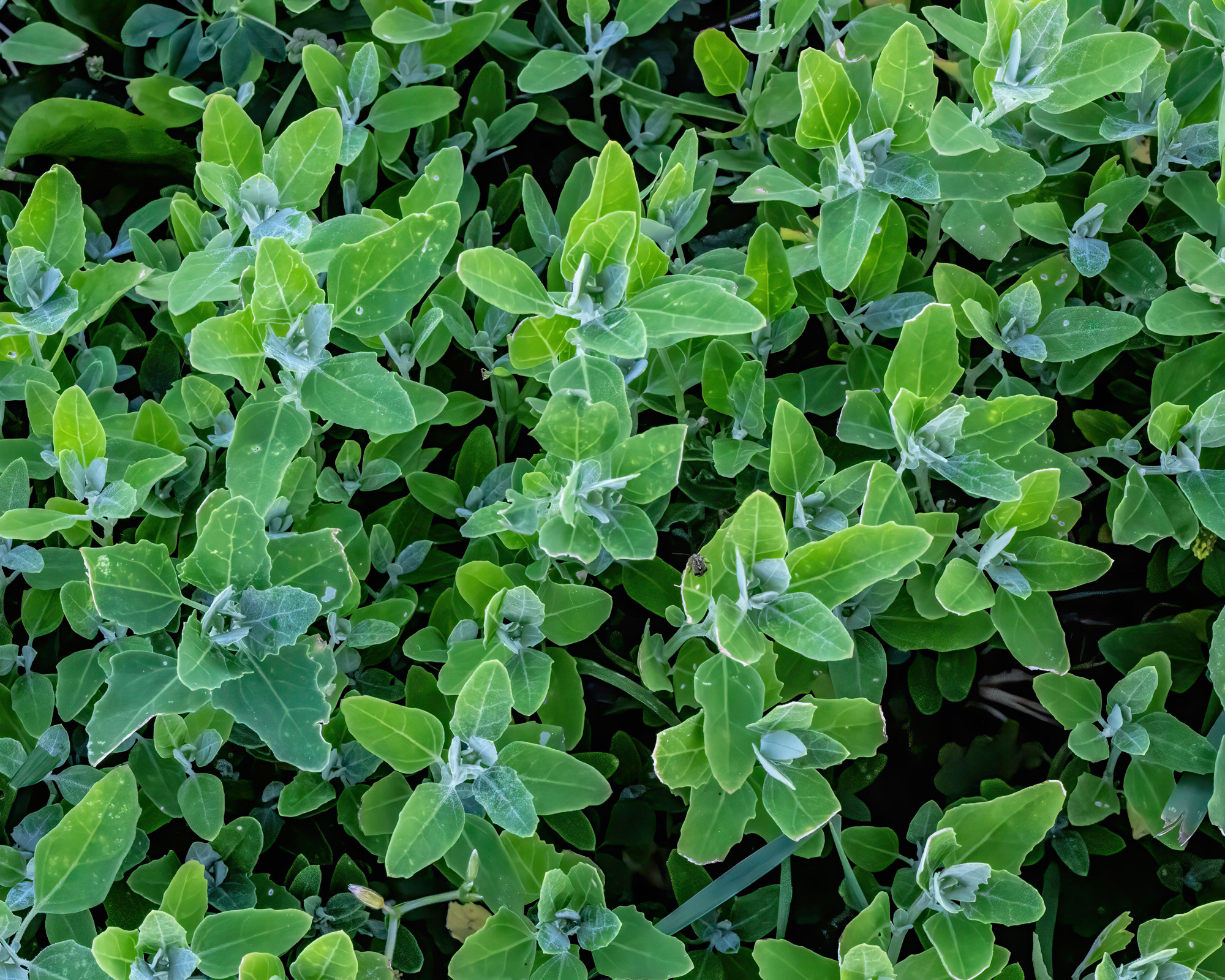
- Height: up to 1.2m high
- Edible parts: leaves, flowers, seeds
These edible weeds have quite a few bizarre-sounding names, including white goosefoot, bacon weed and lamb’s quarters. However, they are commonly known as fat hen or wild spinach. Fat hen (Chenopodium album) is a member of the same family as spinach and beetroot, and it may be modest in appearance but it is surprisingly tasty.
The leaves of fat hen are best cooked and used as a substitute for kale and cabbage. It has a reputation for being quite a dominant grower, so you will enjoy lifting these plants for eating! If you like these edible weeds, you should also try tree spinach (Chenopodium giganteum) and Good King Henry (Chenopodium bonus-henricus), aka the ‘poor man’s asparagus’.
- Buy tree spinach in the US: view at Strictly Medicinal Seed
- Buy tree spinach in the UK: view at Amazon.co.uk
7. Purslane
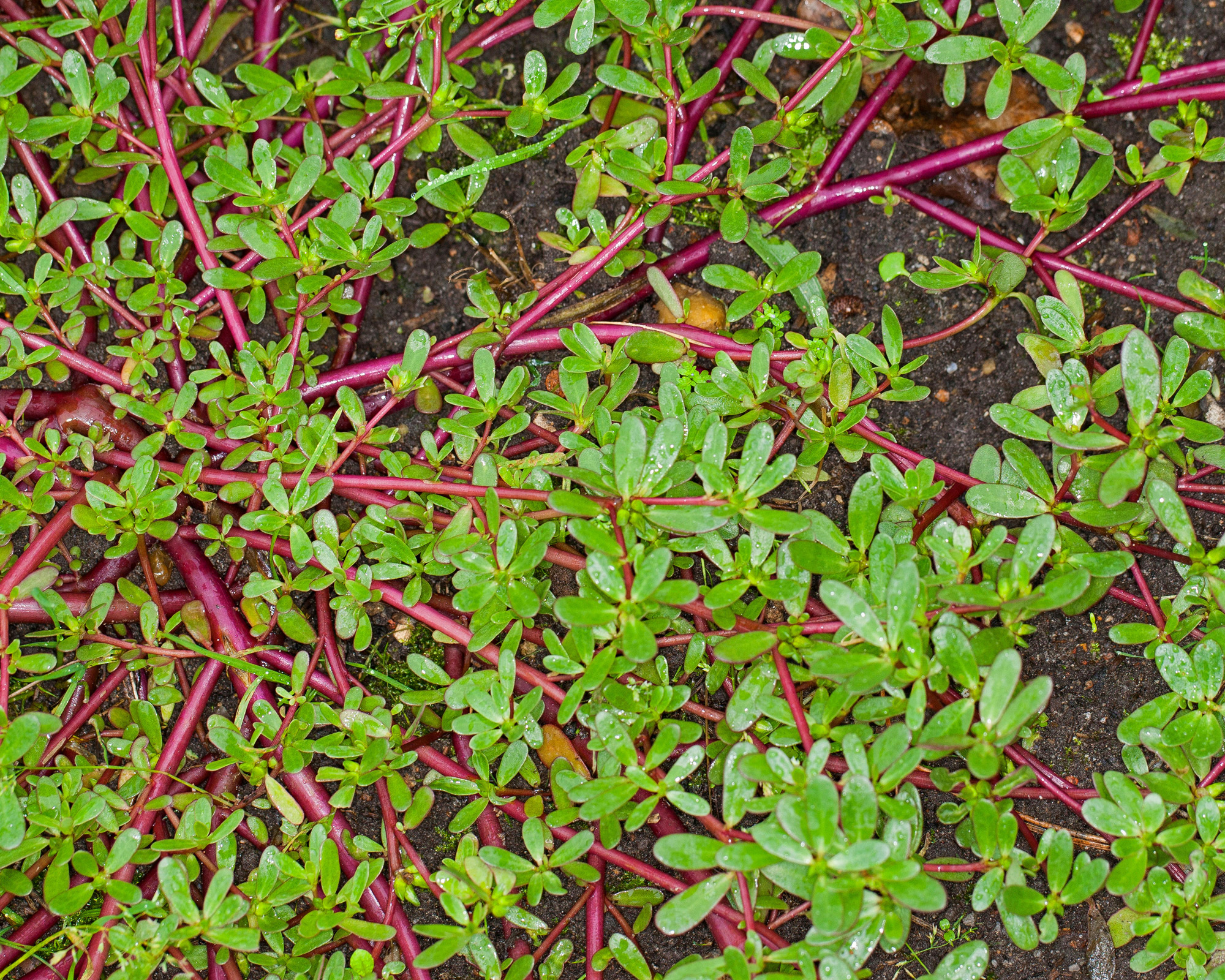
- Height: 15-20cm high
- Edible parts: leaves, stems, flowers
Tumbling from paving slabs, paths and cracks, common purslane thrives in parched situations. It’s one of the most resilient plants for rockeries and amongst the best patio plants you can grow. This unassuming plant is also an ancient medicinal wonder and one of the most nutritious weeds to eat as it is loaded with Omega-3 fatty acids.
Also known as little hogweed and the moss rose, it’s easy to identify this edible weed as it resembles a succulent. Fleshy foliage develops in elongated clusters on reddish stalks. Viewed as a citrussy delicacy across Asia and the Middle East, young leaves are best consumed raw, while older pickings work well steamed or stir-fried.
8. Horseradish
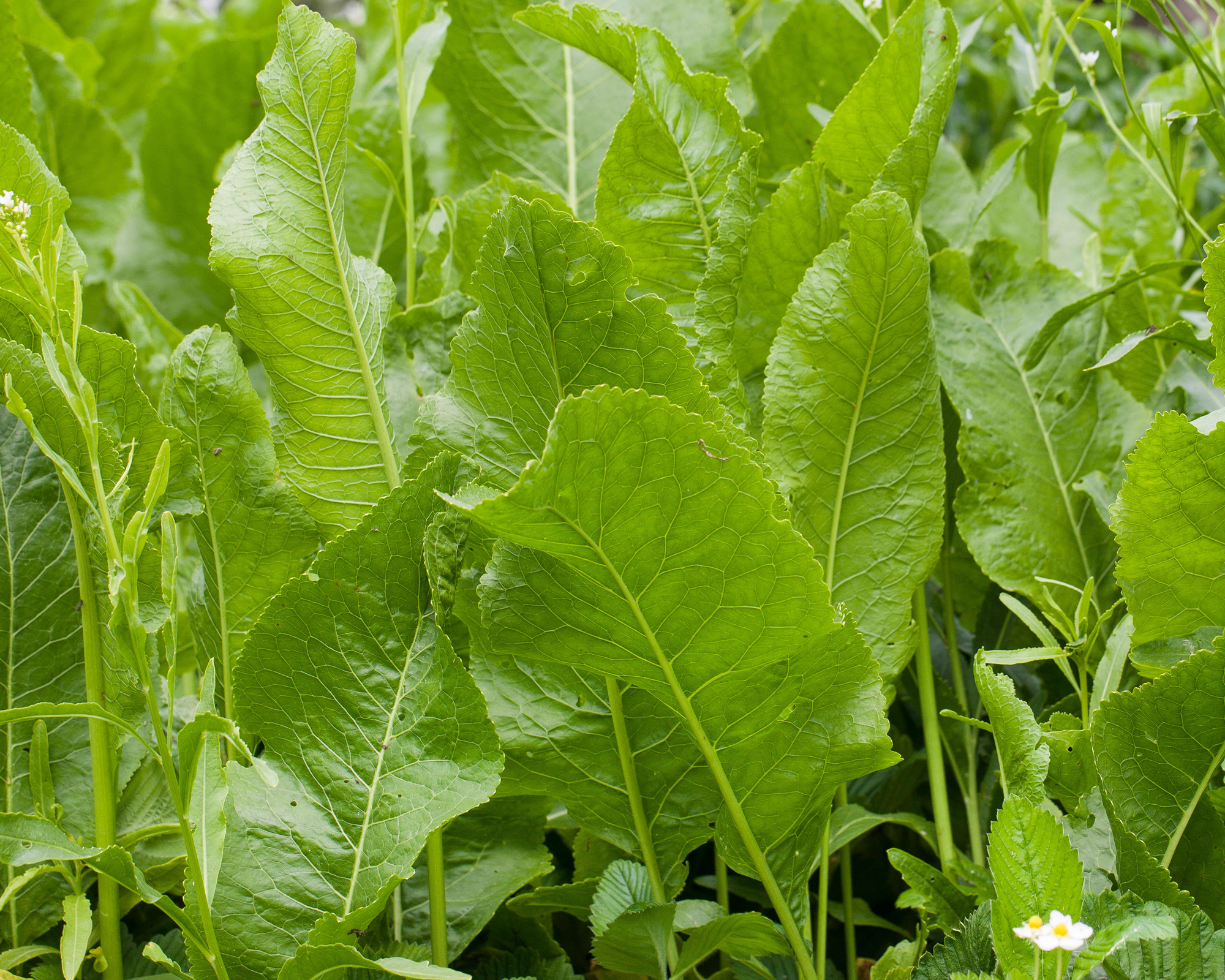
- Height: 90cm high
- Edible parts: roots, leaves
Coming from the same family as mustard, horseradish (Armoracia rusticana) is one of the most pungent edible weeds you can grow. These rugged, cold-hardy perennials thrive in well-drained soil and make excellent companion plants for potatoes because they are a natural pest and disease repellant.
Horseradish root is particularly tasty, and when grated it makes a delicious sauce. However, it is quite pervasive in gardens and can quickly take over. As Lucy notes, its spreading roots penetrate deeply and can be stubbornly persistent. If you are able to sink a young plant in a large pot or planter, you may find this helps keep its feistier habits in check.
9. Sheep’s sorrel
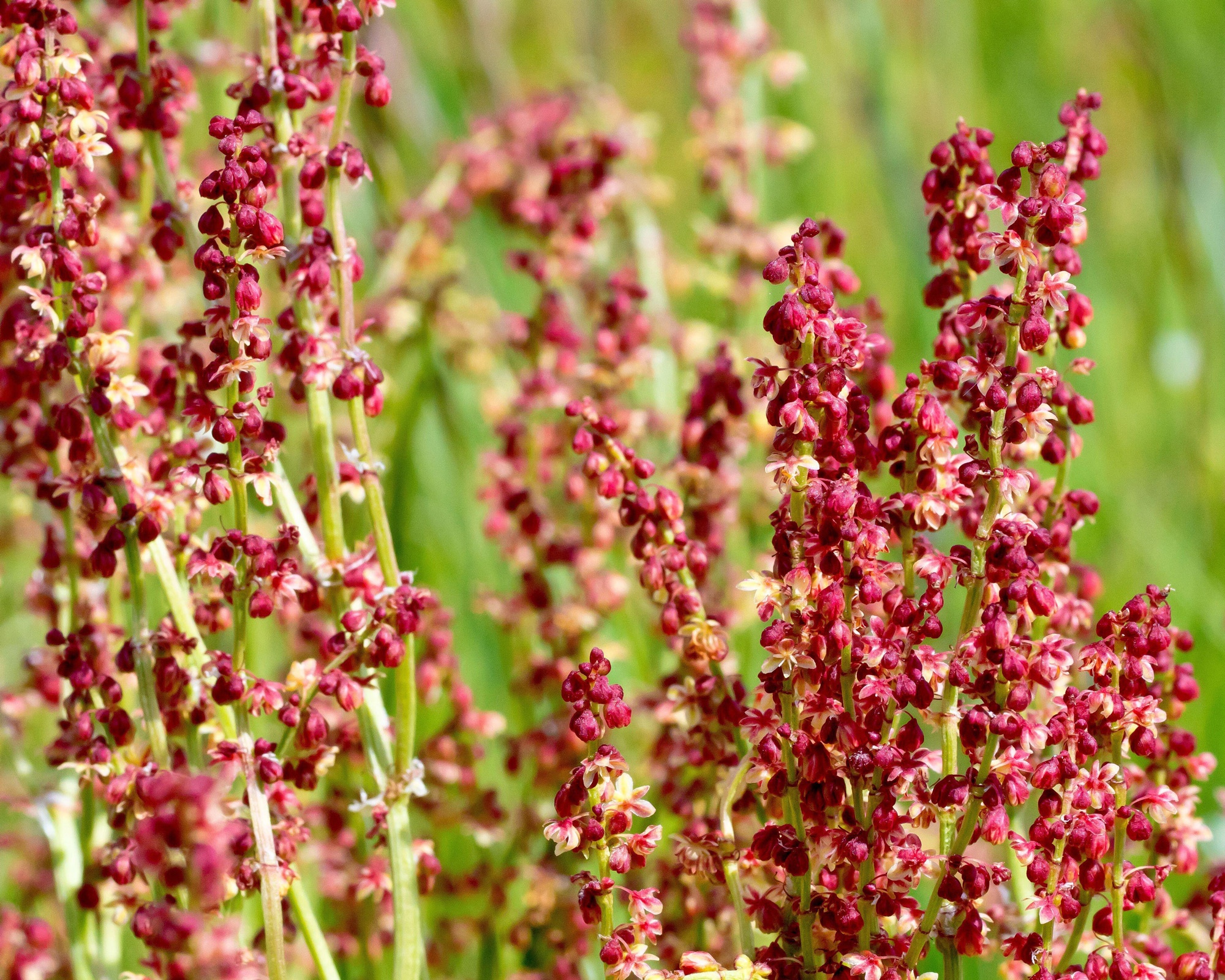
- Height: up to 1m
- Edible parts: leaves, roots
Known as the ‘sour weed’, sheep’s sorrel (Rumex acetosella) has a tart and tangy flavor, which is often described as being like rhubarb or lemon. The acidic taste comes from the presence of oxalic acid, so consumption of this weed is advised only in small quantities.
Given their fragrant character, sheep’s sorrel works well in Thai stir-fries and salads. You can eat both its distinctive arrowhead leaves and roots, but pick while young. If you like this edible weed, you’ll love heartwing sorrel (Rumex hastatulus), which is also found growing wild in gardens.
10. Yarrow
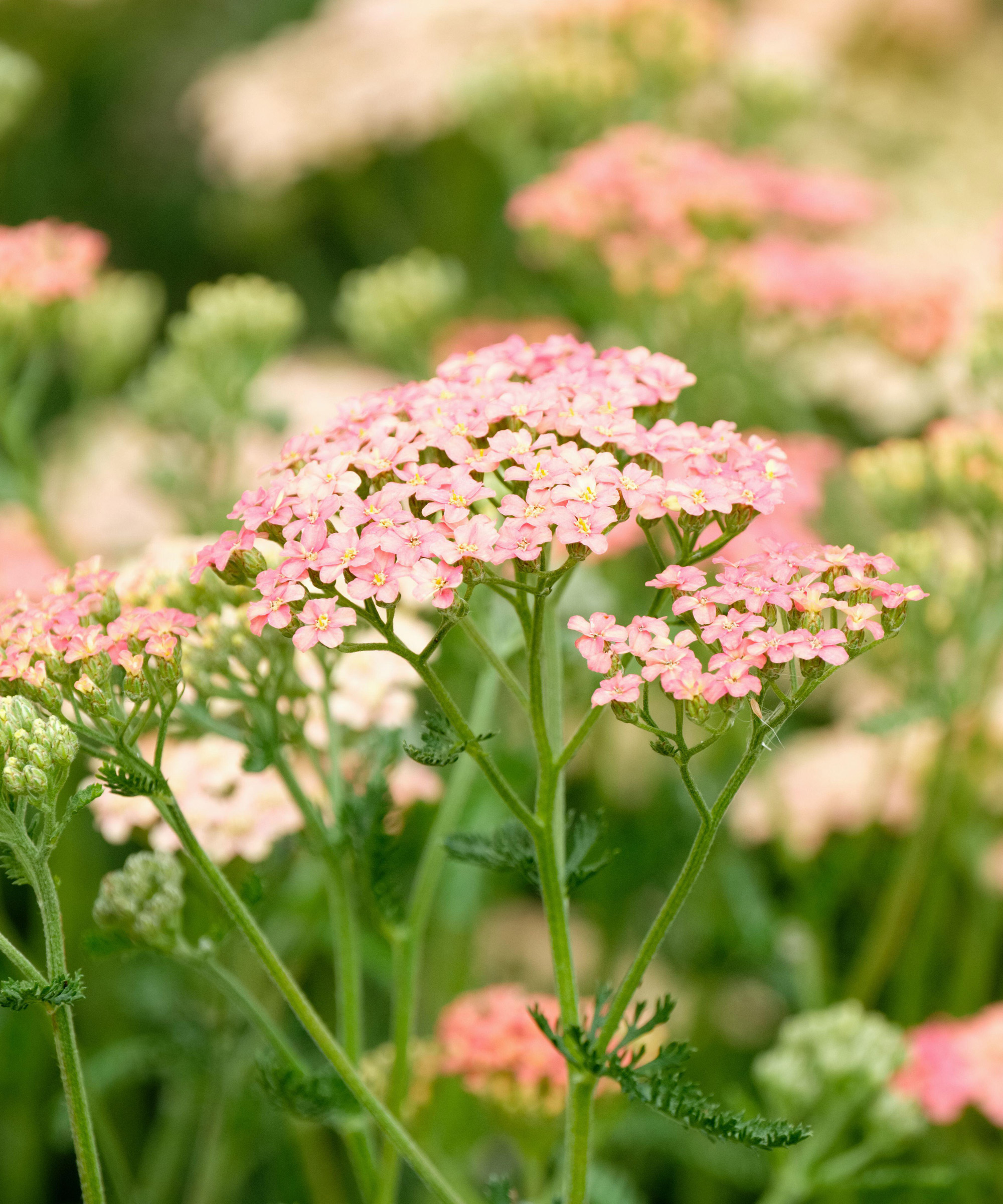
- Height: 60cm-1.2m
- Edible parts: leaves, flowers
Common yarrow (Achillea millefolium) has evocative alternative names such as soldier’s woundwort, devil’s nettle and old man’s pepper. As horticultural expert Anne Swithinbank points out, the name ‘soldier’s woundwort’ alludes to this weed’s wound-healing properties. And as well as having fine herbal properties, this edible weed is nutritious and tasty.
There are many pretty ornamental varieties, but common yarrow makes a fine leafy green in soups and stews, with a taste reminiscent of tarragon. You can grind the leaves and flowers to make a spice. You can also make herbal tea from this weed. One word of warning: ‘This weed is said to help with digestive disorders and fevers, but don’t take if pregnant or breastfeeding,’ says Anne.

Anne has been a freelance horticulturalist since 1986. She trained at Kew Gardens in London, and her early days involved small landscaping projects, garden maintenance, writing and presenting on Gardeners’ World. She’s a regular panelist on BBC Radio 4’s Gardeners’ Question Time, and a key contributor to Amateur Gardening, offering advice on everything from composting to the latest flower varieties to choose for your plot.
11. Dandelion
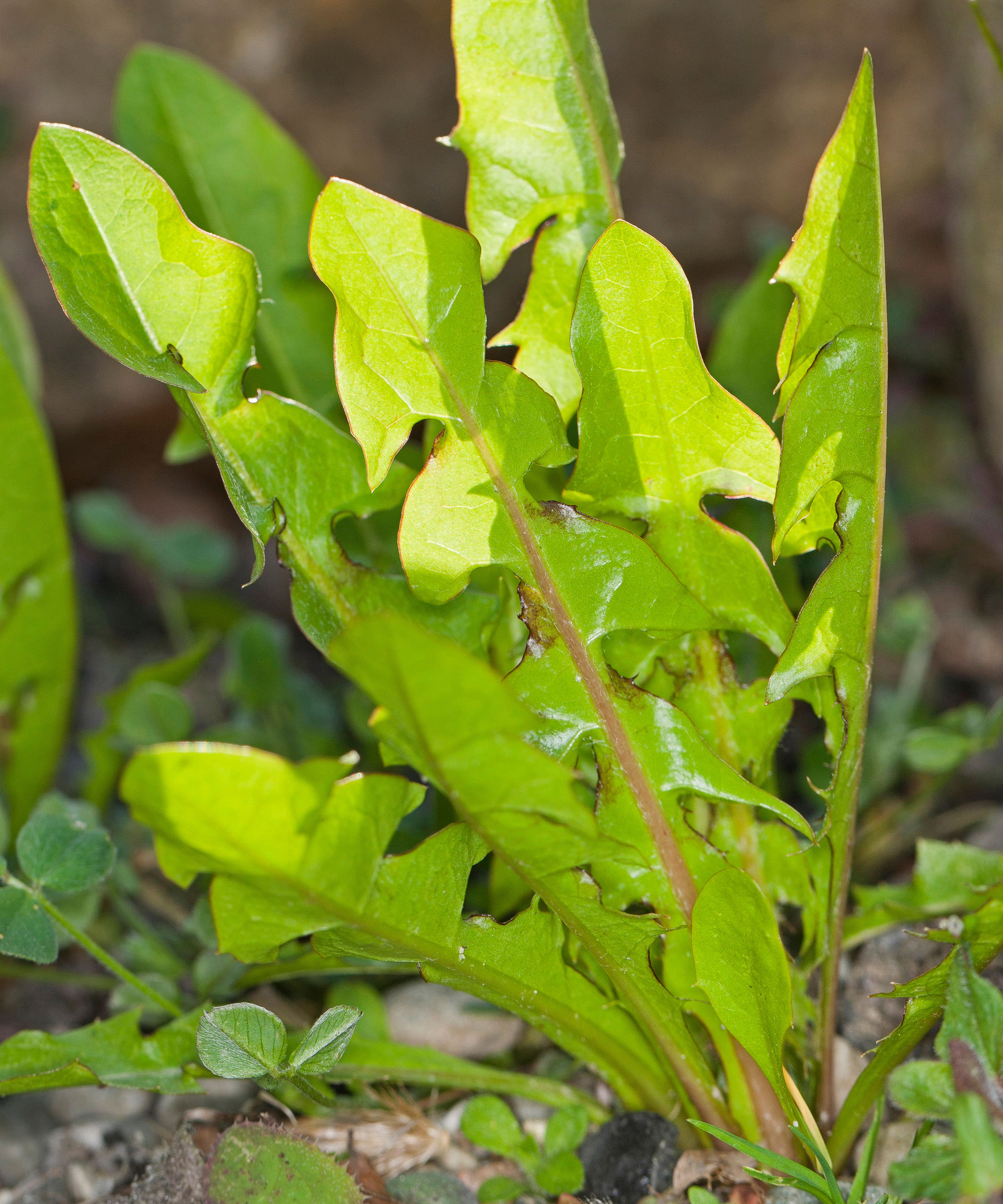
- Height: 40cm high
- Edible parts: leaves, flowers, roots
Flowering early in spring and late into the fall, dandelions are some of the most tenacious and enduring weeds in the garden. Although they have long been likened to botanical thugs, dandelions are incredibly beneficial. They make potent bee-friendly plants and they are some of the most versatile edible weeds on the plot.
As Lucy Chamberlain observes, dandelion leaves make a punchy winter salad or stir-fry ingredient. If you find them too bitter, cover rosettes with an upturned clay pot to blanch the shoots. And if you are concerned about how pervasive dandelions can be on the plot, plant a few taproots in a large tub of moist potting compost, says Lucy. You may find they make some of the best perennial plants for pots and will service you with tasty greens for months.
12. Burdock

- Height: 90cm-1.5m
- Edible parts: roots, leaves
Most of us get our first taste of burdock as children, by gulping down the distinctive dandelion and burdock drink, which is bursting with vitamins. However, these perennial weeds can also be enjoyed for their nutty roots. Great burdock (Arctium lappa) is known to self-seed and thrives in a wildlife garden or meadow-style patch.
While you may recognize burdock growing wild by its vivid, thistle-style purple flowers, it is the young and tender roots that are the real steal when it comes to eating. Lucy recommends peeling and placing these in lemon water until they are needed to prevent discoloring. ‘As well as being edible, burdock offers a purgative effect for toxins,’ says Lucy.
13. Duckweed
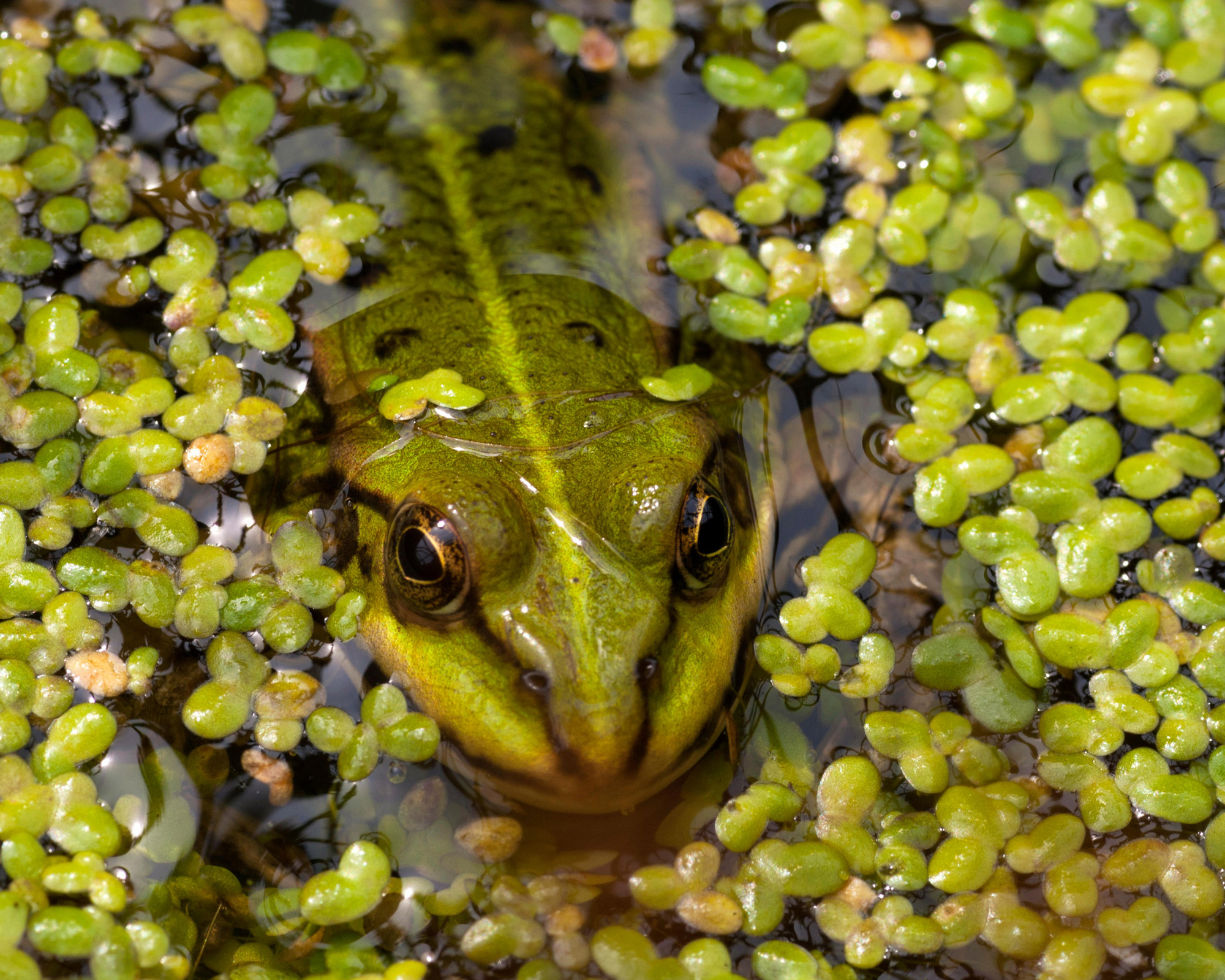
- Height: 20cm long
- Edible parts: stalks, leaves
Formerly dismissed as the scourge of garden ponds, duckweed is experiencing a botanical Renaissance in the west thanks to its popularity in Asian cuisine. It could well be one of the most beneficial edible weeds you can nibble on: protein and vitamin rich, anti-inflammatory, incredibly fast-growing and impressively sustainable in gardens of all sizes.
Reminiscent of watercress, this aquatic perennial is one of the best pond plants in terms of how easy it is to grow and maintain. As well as being shade loving and low maintenance, it is fast becoming the new ‘superfood’ as well as one of the most refreshing weeds to eat. Wolffia varieties are best, but you can also eat Lemna duckweed in small quantities.
14. Wood sorrel (oxalis)
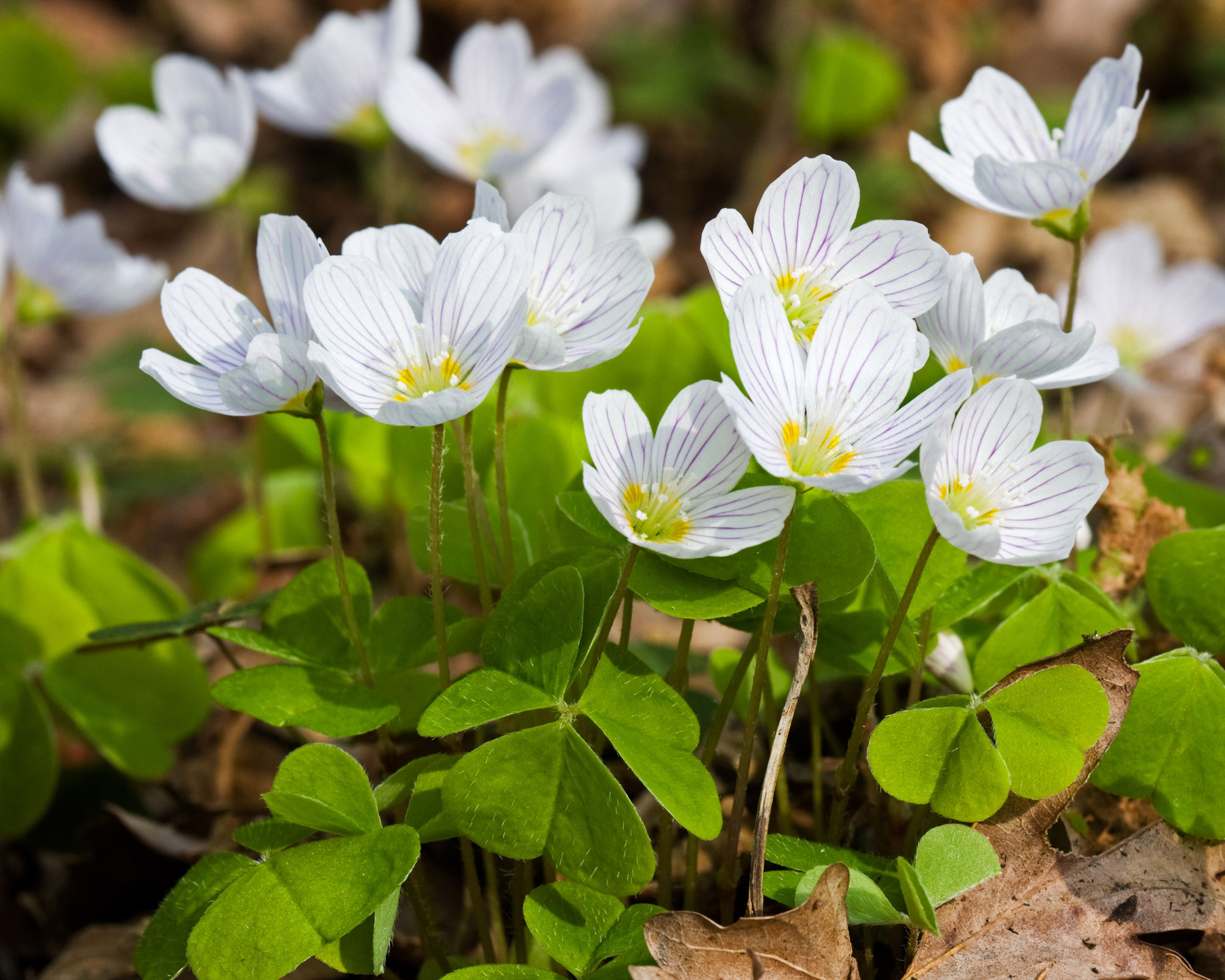
- Height: 20cm high
- Edible parts: leaves, stems, flowers
There are several types of wood sorrel, including pink and yellow flowering varieties. Some varieties such as Oxalis montana are known as sour grass, which hints at their flavor. As long as you have a green-leaved type of weed, these are excellent weeds to eat. They are rich in vitamin C and their fresh citrus tang makes them perfect in salads.
Those with white flowers have a super-sour tang. As Anne Swithinbank observes, some call this type ‘Alleluia’ because their blooms open between Easter and Whitsun. Like sheep’s sorrel, the leaves contain oxalic acid so eat in moderation. ‘Establish by planting rhizomes at the base of trees or shrubs in light shade,’ says Anne. Yellow wood sorrel or lemon clover (Oxalis stricta) is also a great edible weed.
- Buy yellow wood sorrel in the US: view at Seeds World Online
- Buy yellow wood sorrel in the UK: view at Amazon
15. Red/crimson clover
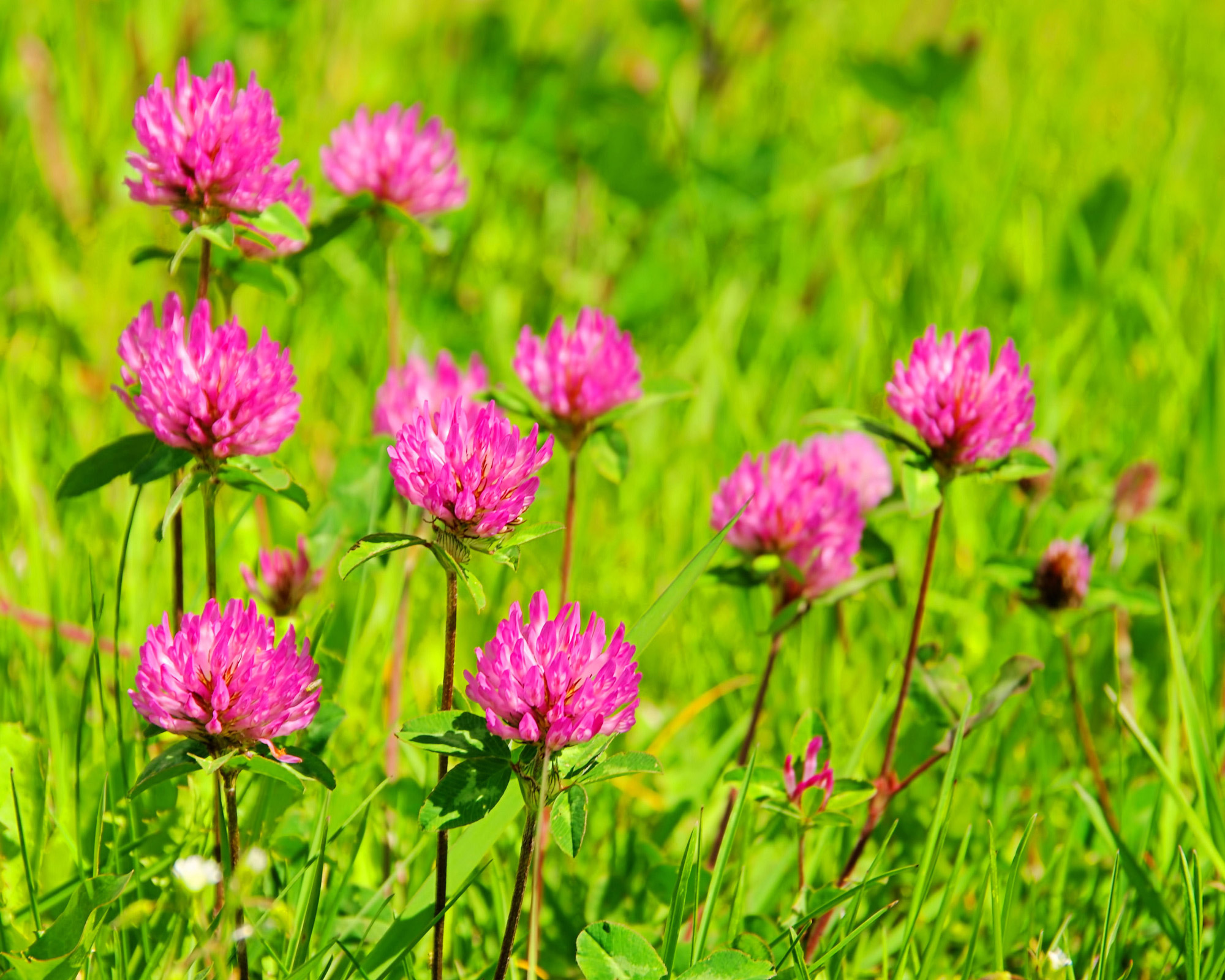
- Height: 80cm high
- Edible parts: leaves, flowers, seeds
If you try red clover leaves or flowers and wonder why they taste a bit like beans, it’s hardly surprising – this clover (Trifolium pratense) is a member of the bean family (Fabaceae). You can eat the leaves and the seeds, but the stunning balls of tubular magenta flowers are especially popular.
Thanks to the bean connection, red clover is also great for fixing nitrogen in the soil. Cousin crimson clover (Trifolium incarnatum), also edible, is an effective green manure and can give the soil a reboot between harvest and new sowing. However, while tasty, it is advised not to eat too much of these edible weeds or you may experience bloating.
Which edible weeds are best for other plants?
Some of the edible weeds mentioned here will benefit other plants if they grow in the right spot and conditions. As long as they are not threatening to overwhelm nearby crops, nettles and dandelions help attract pollinators like butterflies to the garden. Nettle is a ‘miracle weed’ because it can also be turned into a tea that you pour around other plants to boost growing. Wood sorrel and dandelion make effective (and cheap) liquid plant feed.
Then there are other weeds which are not edible but can also, when picked and processed, be used to make fertilizer. Depending on your soil types, comfrey (Symphytum officinale) is great for giving plants a boost. ‘Bocking 14’ contains high levels of nitrogen, potassium and phosphorus. The leaves are also effective if used in mulching around other plants.
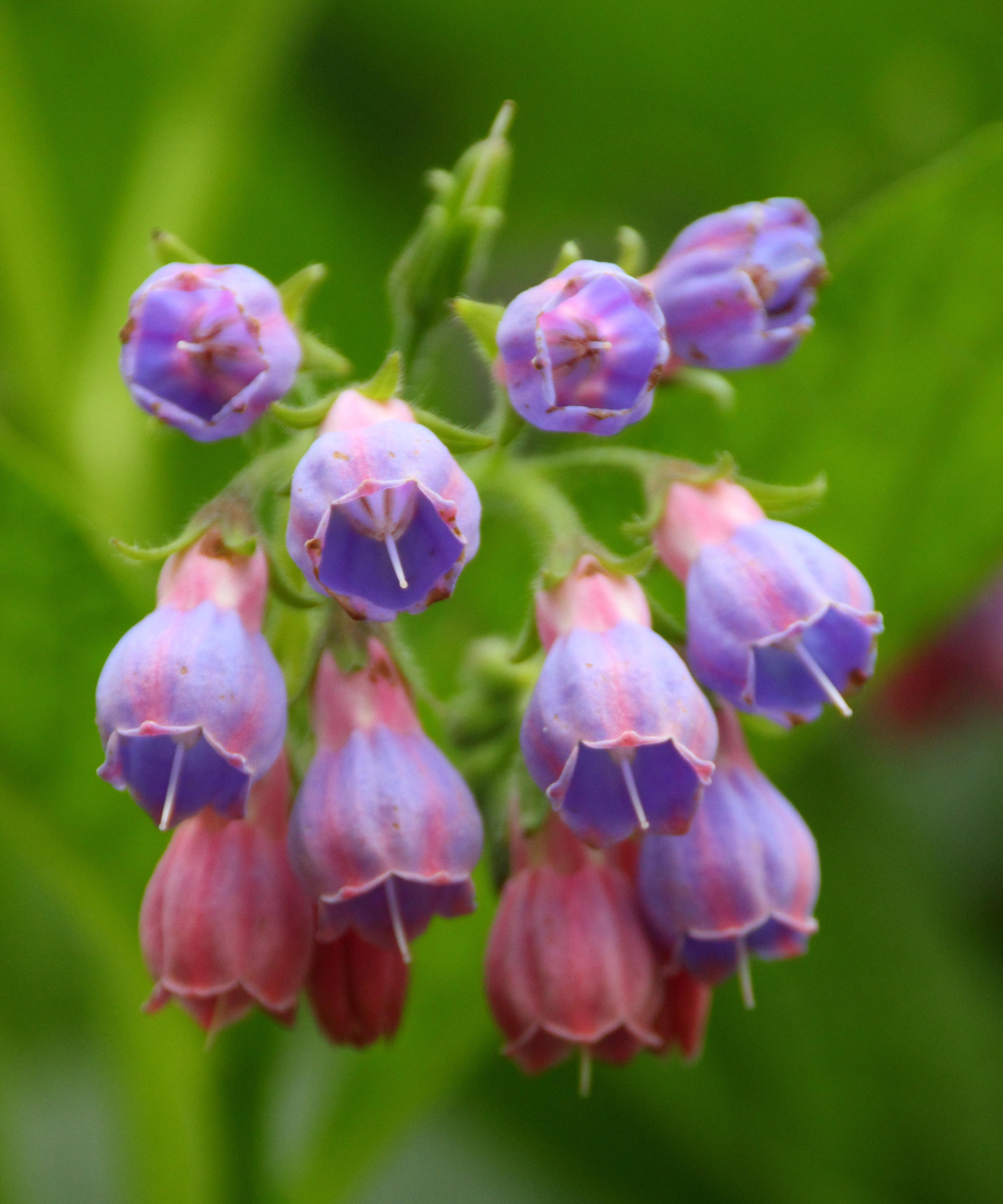
Which weeds cannot be eaten?
Although a surprising number of weeds are edible, nutritious and tasty, there are some notable exceptions. While a few weeds are merely unpleasant, others are actively toxic – and can cause severe illness, or worse. A few weeds like oleander are poisonous plants for dogs and toxic for cats, so make sure you aren’t compromising the health of your pets and take steps to eliminate unnecessary risks.
It’s a sobering fact that a few of the most beautiful-looking weeds are the deadliest. If you are at all unsure about a particular weed and can’t make an accurate identification, don’t risk it. Wait until you can consult a reliable source for more information – or leave well enough alone. And don’t forget to get rid of weeds that cause you concern. Here are some of the most striking yet most devastating weeds for humans:
- Belladonna (Atropa belladonna, aka deadly nightshade), when consumed, can lead to hallucinations, blurred vision, coma and death.
- Wild hemlock (Conium maculatum) is poisonous to animals and people, and is fatal in even tiny amounts; this applies to all parts of the plant.
- Oleander (Nerium oleander) can cause heart arrhythmia, and even food that comes into contact with the branches can cause severe illness.
- Bittersweet nightshade (Solanum dulcamara) develops poisonous (albeit temptingly purple) berries, and the leaves contain a highly toxic fluid.
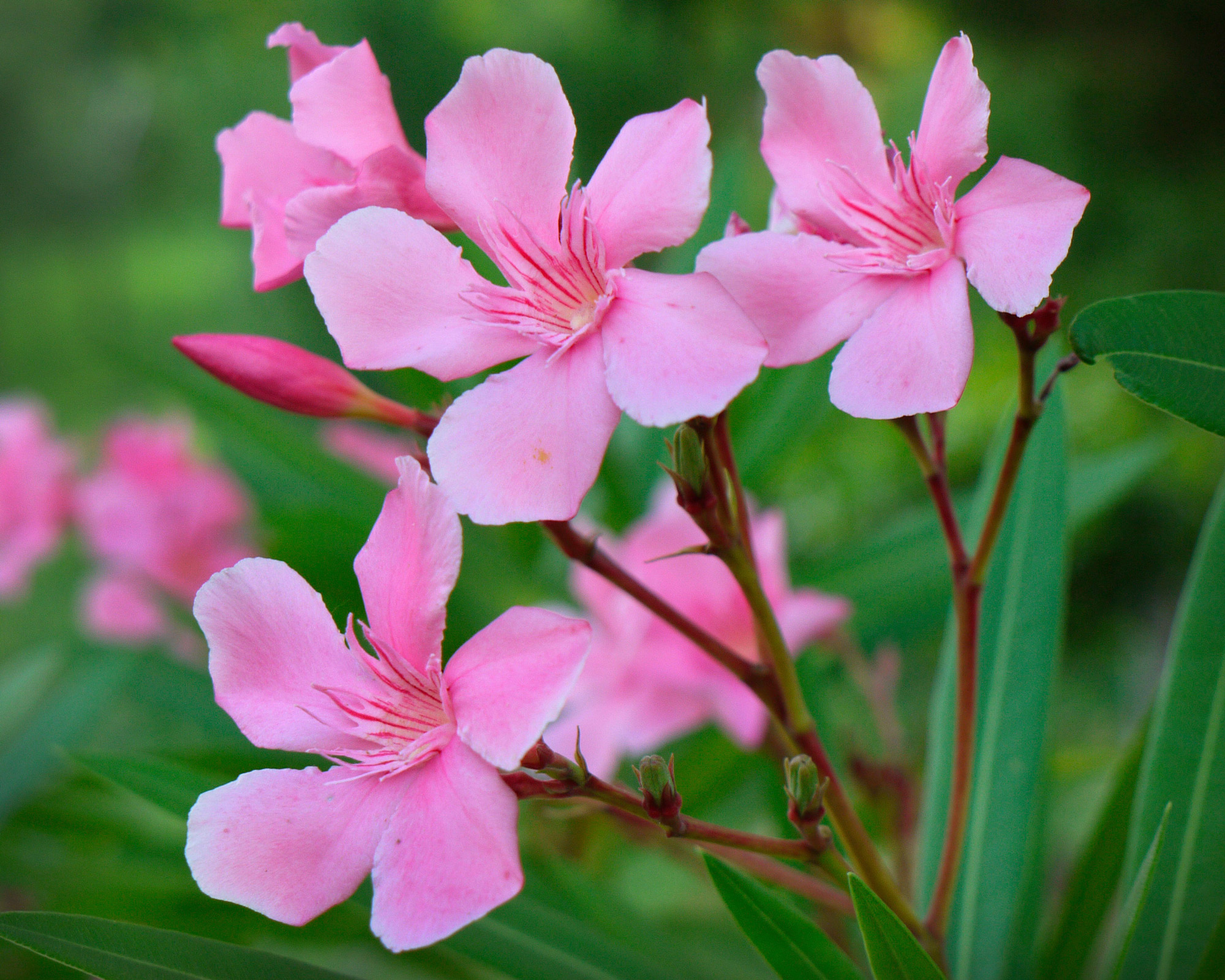

As assistant editor of Amateur Gardening magazine, Janey's gardening passion was fostered from an early age, when her amazing mum had her deadheading hydrangeas, mulching roses, and propagating strawberry plants from runners for school open days. She's also taken part in lots of conservation and rewilding projects for the RHS and TCV as a way of exploring her horticultural horizons.
